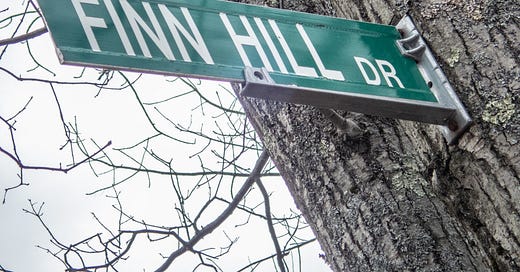FINNS: An Oral History of Finnish-Americans in New Hampshire’s Monadnock Region
Excerpted from FINNS: An Oral History... by Patricia Kangas Ktistes, 1997, all rights reserved.
Kathryn Niemela
My brother Jason is a big lug and he and his friends could push over a cow. He did it when we lived in Peterborough and there were fields near our house. My brother, in his teens with his high-school friends, of course would look for mischief and cow-tipping is one of the things you do if you’re a New England youth. Kids have always known about it. They’d all get together and try to tip over a cow with their body weight. And apparently it was very difficult to do, so it was a macho thing if you could tip one over by yourself. But most of the time, they joined forces together. He said the cows would get furious and chase them right out of the pasture: the other cows, that is. The one tipped over was stuck. I recently asked some dairy farmers if that hurts the cow and they said it’s not a good thing, but they’re not extremely damaged. My grandmother’s barn on Frost Farm in Dublin was a huge source of intrigue for all the Niemela and Korpi cousins. It has the date 1806. The Frost family, I think they were relatives of the poet Robert Frost, built it and my grandparents bought it during the Depression. There was a hayloft and you could jump down into the hay from the top. And there were cats all through there and you could hide in the hay. One summer when my grandfather was still milking cows, we would go in and watch. It was cold, going in there. A long line of cows on the right side of the barn; and he’d do it all by hand. One thing we’d be afraid of in the barn was the pitchfork in the hay, but no-one ever got hurt. The cats were all in there, hanging out by the milking operation. My sister Suzanne and I especially liked to pet the cows and we wanted to ride the horses, but they were not riding horses. In the barn you could climb on the rafters, way up to the windows, and look out. To see who might be coming down the road: drunken Finns maybe. And eventually they got rid of the farming operation and the barn became just a storage barn. There was an antique car in there. It was out behind the barn that my father saw his uncle who had shot himself: a suicide. So we kids never went behind there. Behind the barn was emotionally off limits. The barn had three levels. Very plain, slanted roof it was across the road from the farmhouse and behind the barn were all sorts of fields. Next to the barn was an apple tree that my father still remembers and it apparently is chopped down now, but it had apples that were white. And they would eat them all the time and they were just phenomenal apples and he’s never been able to find out what they were. The farmhouse was a big, long, white, different-shaped cape with a big field and a huge elm tree that we all climbed. There also was a butter churn, which they still used. I got to do it; it was tedious. It was this yellow round thing and you opened it out on top and there were handles on the side that you used to rock it. The butter took a long time to make. In the back yard was the sauna and another apple tree, Baldwins, and the clothesline. And on the side of the house was another field and that’s where we had all the family reunions: in that garden. I think it was big enough during the Depression to feed everybody. My grandmother grew a lot of corn. She’d give us peas all the time and we’d eat those raw. Radishes: I loved them. My grandmother Lempi was good at cooking, but I didn’t like it. It was always meat. Always beef! Roasts, squash, soups, dark ones, and mashed potatoes. All I really remember is the sweet stuff the important things. Now the coffee. It was made in one of those silver pots that you percolated. It was always served in either mugs or sometimes for the women it was in cups and saucers: men didn’t use them much. Whenever anyone came, coffee was what we had, no matter what time of the day, even nine at night. My dad still drinks it, espresso-octane, late at night and goes right to sleep. A lot of my brothers and sisters do, too, but I can’t. Finn kids all started drinking coffee at age five. In the town of Dublin, there were Finns but not as many as in New Ipswich. My grandparents’ farm was just on the town line of Dublin and Jaffrey, but most of our family was in Jaffrey, some in New Ipswich, some in Townsend, Massachusetts. For years, no-one dared to leave the area. That’s only happened recently.




I have many memories similar to Kathryn's. Never tried cow tipping but did try to ride them when they came near to a fence that we sat on. Our grandfather would get upset with us because harassed cows didn't milk well.